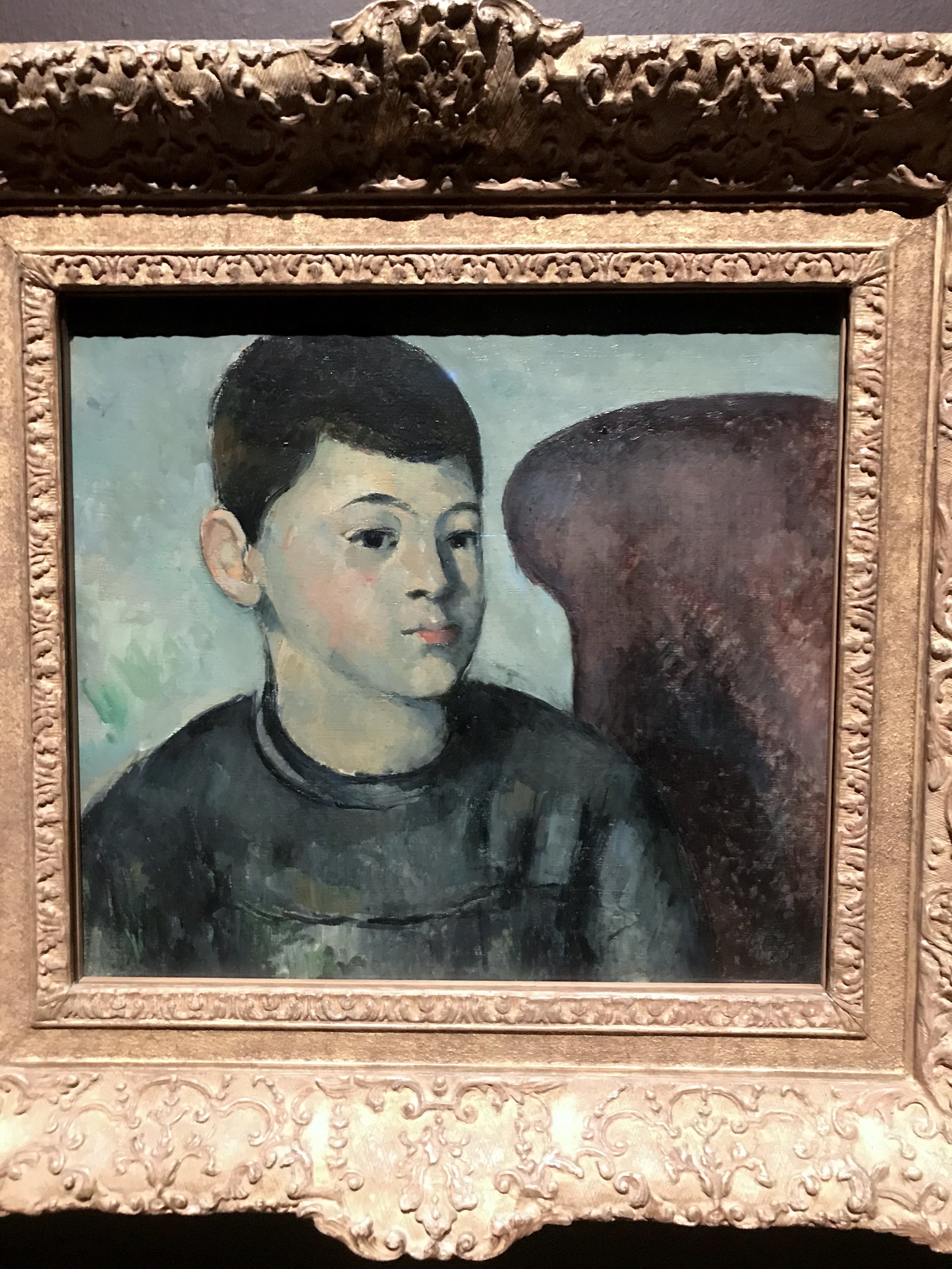CÉZANNE - A SPACE BETWEEN FATHER AND SUN.
A view of ‘a once in a generation’ retrospective show at Tate Modern LONDON.
‘Portrait of the Artist’s Son’ by Paul Cézanne, 1880, oil on canvas.
My eye was drawn to a few pictures within this exhibition - a feat in fact - when such a dazzling showing of images (80) feels overwhelming to behold - in fact someone fainted whilst I was there… unsurprising when seeing such beauty squared in the real.
Apparently, the signal in life to knowing your calling is through the passions you feel - and there are signals which patiently repeat within this exhibition - passions revisited - of landscapes where you can sense the breeze billow through your clothes, the sun warm upon your skin with that particular surprise that is experienced when summer arrives.
The artist’s popularity was not experienced early in his career and it is a testament to his instincts and will to have continued within a style that he quietly fostered.
It would be easier to surrender to the satisfaction to gaze upon Cézanne's work in pure wonderment, the prettiness of the views, and imagine just how sweet those fruits would taste, warm and heavy with juice from a studio table. My fellow viewing public was caught up in the nostalgia, I overhead many threads of conversation - remembrances of past holidays and long lunches.
Paul Cézannes’ family home: ‘Jas de Bouffan’, Aix-en-Provence.
A photograph of the leafy residence where the Cézannes lived feels like a daydream from another age, a time when flag irises grew plush and abundant - where the dappled green of a garden of trees filled salons with shimmering jade - that specific atmosphere is very present within ‘Portrait of the Artist’s Son’, where a young boy sits, composed, if, I imagine - reluctantly so - keen to return to that garden of adventure outside the frame of the painting.
‘Portrait of the Artist’s Son’ by Paul Cézanne, 1880, oil on canvas.
But there is a darkness to this exhibition that undercuts the lightness - tasting notes of the more complex persist - certain landscapes at times feel pure Hitchcock - devoid of people, all beating heat and unnerving stillness - and the still lives - are not as they seem. Where is the turning point for when all this visual splendor fades - a season changes and fruit spoils? A watercolor series of skulls suggest an answer.
The Three Skulls by Paul Cézanne 1902-1906, Watercolour, with graphite, on ivory wove paper.
A series of the artist’s tools are on display, including this watercolor palette - still containing the remains of Cézannes iconic colour sense.
The Tate’s exhibition title: CEZANNE - reflects the artist’s style of removing the accent from Cézanne when signing his work.
The EY Exhibition: CEZANNE - until 12 March 2023
Tate Modern - tate.org.uk
Special Thanks: Anna Ovenden





